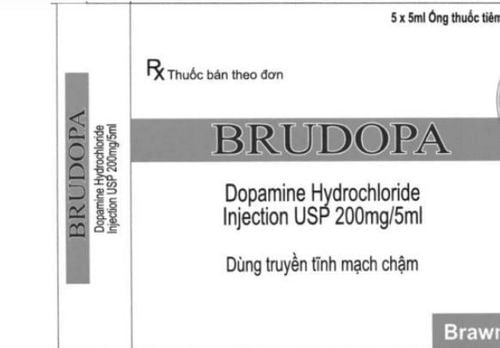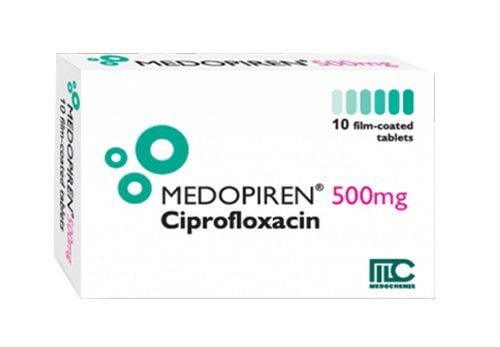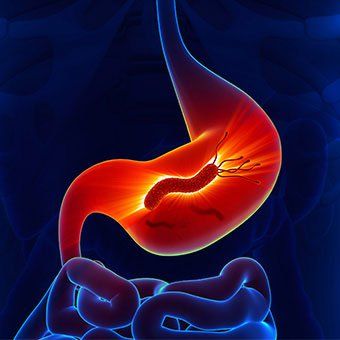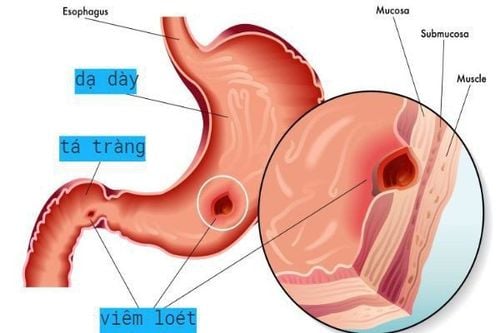This is an automatically translated article.
Cholangitis is an infection of the bile ducts, the most common cause is gallstones, a few can be caused by tumors and strictures of the bile ducts. So what is complicated cholangitis if not promptly treated?
1. Signs of cholangitis
Cholangitis is a disease that can occur in the bile ducts in the liver (intrahepatic cholangitis) or extrahepatic or inflammation in the gallbladder. When suffering from cholangitis (inflammation of the bile ducts), patients often appear sudden fevers, the temperature can fluctuate up to 39-40 degrees Celsius, accompanied by chills, sweating, pain in the lower abdomen. severe right flank pain, pain may radiate to chest and right shoulder. Sometimes the patient still has pain in the epigastrium, vomiting/nausea, jaundice/mucosal yellowing, yellow urine, fatigue, dyspepsia, sometimes even whole body itching, pain at the pocket point. secret...
2. What are the complications of cholangitis?
Untreated or delayed cholangitis can lead to complicated cholangitis with severe consequences such as:
Acute: gallbladder rupture, gallbladder necrosis, bile infiltration into the peritoneum, bleeding at biliary tract, biliary shock, sepsis; Chronic: abscess - biliary tract abscess, cholangitis, cholangiocarcinoma, nephritis, renal failure. Acute cholangitis occurs when the biliary tract is narrowed due to various causes: common bile duct stones or the presence of tumors leading to cholestasis and biliary tract infection. The narrowing or obstruction of the biliary tree will increase the pressure inside the biliary system, pushing microorganisms or endotoxins from the bile into the general circulation, thereby causing a systemic inflammatory response.
Complicated cholangitis carries a high risk of mortality if the patient is not treated with antibiotics and immediate biliary pressure reduction interventions with appropriate techniques. Therefore, patients need to be diagnosed and assessed the severity of acute cholangitis accurately and quickly.
If cholangitis is suspected, the patient needs to see a gastroenterologist as soon as possible, depending on the severity and cause of the inflammation, the doctor will decide on a medical treatment (broad-spectrum antibiotics to control the disease). control intestinal bacteria and penetrate well into the biliary tract, use stone-dissolving drugs, drugs to treat symptoms...) or surgical treatment.

Viêm đường mật biến chứng có nguy cơ tử vong cao
3. Early diagnosis helps timely treatment, limiting complications
Charcot triad including: abdominal pain, fever, jaundice is used to diagnose acute cholangitis, this is a symptom with very high specificity but low sensitivity (26.4%) leads to many limitations. in the diagnosis of disease. In the diagnostic criteria, sensitivity is more important than specificity because acute cholangitis can be life-threatening if not diagnosed and treated promptly.
Contributing factors to the diagnosis of cholangitis include: abdominal pain (right upper quadrant or epigastrium) and history of biliary tract disease such as gallstones, prior biliary tract surgery or placement biliary stents.
Signs of systemic inflammation: fever (38°C or higher or slight increase in body temperature), increased inflammatory response (white blood cell count, high C-reactive protein), additional blood tests may be performed, although However, mild cases may not be diagnosed.
Cholestasis: occurs only in 60-70% of patients, the diagnosis can be made even in the absence of jaundice based on the results of blood tests with elevated alkaline phosphatase (ALP), gamma-glutamyltransferase (GGT) and transaminase alanine aminotransferase (ALT).
Despite advances in imaging, it is still not possible to directly diagnose cholangitis based on imaging alone, only biliary stricture/obstruction causing acute cholangitis, or indirectly aid in the diagnosis. Imaging tests include: abdominal ultrasound, computed tomography, and magnetic resonance imaging. In this case, radiographs alone are not suitable for the diagnosis of cholangitis. Endoscopic retrograde cholangiopancreatography is performed for therapeutic purposes (drainage) but is not suitable for diagnostic purposes.
4. Classification of cholangitis
Classification of cholangitis helps to predict and define treatment strategies:
4.1. 3rd-grade cholangitis (severe inflammation)
When dysfunction of at least 1 of the following organs occurs:
Cardiovascular dysfunction, hypotension: treat with Dopamine 5 μg/kg/min or Norepinephrine; Nervous disorders, disturbances of consciousness ; Respiratory disorders: PaO2/FiO2 <300; Renal dysfunction: appearance of oliguria, serum creatinine > 2.0 mg/dl; Liver dysfunction: PT INR > 1.5; Hematologic disorders: platelets < 100,000/mm3.

Chẩn đoán sớm giúp điều trị kịp thời, hạn chế viêm đường mật biến chứng
4.2. Second-grade cholangitis (moderate inflammation)
When the patient has 2 of the following criteria:
Abnormal WBC count > 12,000/mm3 or <4,000/mm3; High fever (body temperature ≥ 39°C); Patient's age ≥ 75 years; Elevated blood bilirubin: Total bilirubin ≥ 5 mg/dl; Decreased blood albumin.
4.3. Densitis I (mild inflammation)
Dense cholangitis was defined in the absence of the criteria for grade III and grade II cholangitis. Early diagnosis, prompt biliary drainage and/or treatment of the causative agent with appropriate antibiotics are the mainstays of treatment for not only grade III and grade II cholangitis, but also both grade I.
Cholangitis is an infection of the bile ducts, the most common cause being gallstones, a few can be caused by tumors and biliary strictures. Therefore, when there are signs of disease, you need to go to medical centers for examination and treatment, to avoid dangerous complications.
Please dial HOTLINE for more information or register for an appointment HERE. Download MyVinmec app to make appointments faster and to manage your bookings easily.













